
PUMPA - SMART LEARNING
எங்கள் ஆசிரியர்களுடன் 1-ஆன்-1 ஆலோசனை நேரத்தைப் பெறுங்கள். டாப்பர் ஆவதற்கு நாங்கள் பயிற்சி அளிப்போம்
Book Free DemoMicroorganisms can also cause damage to animals. One of the deadliest diseases in animals is anthrax caused by Bacillus anthracis. Foot and mouth diseases in animals caused by some viruses. Rabies is caused by viruses, and Q-fever is also a disease caused in animals by bacteria. Vaccination can be used to prevent animals from getting affected by rabies.
Diseases in animals:
1. Anthrax
Causative organism: Bacillus anthracis (Bacterium)
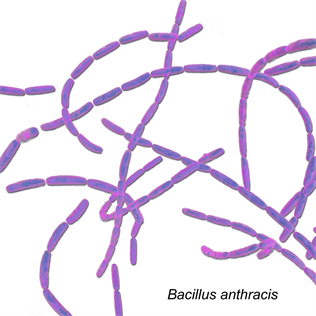
Bacillus anthracis
Important!
It is very common in farm animals (such as cattle, sheep, goats, deer, and other cloven-hooved ruminants).
Mode of transmission: Transmitted through direct contact, inhaling or ingesting the pathogen spores in contaminated soil, plants, or water.
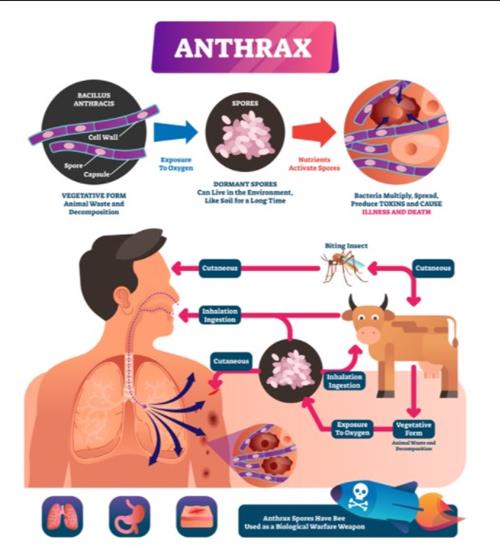
Symptoms:
- There were no obvious signs at first.
- Affected area swollen
- Bleeding from the mouth, nose, and other openings in the body
- Breathing difficulties
- Fever
- Unconsciousness
- Fatal & can cause death
Treatment:
- Completely treated if medication is given at an early stage
- Effective vaccine available
2. Foot & Mouth disease
Causative organism: picornavirus
Important!
(7 types exists A, O, C, SAT1, SAT2, SAT3, and Asia 1)

Picornaviridae virion
Mode of transmission:
- Transmitted through saliva, mucus, milk or faeces.
- Infection spreads through inhalation/ ingestion / direct contact.
- Common in cattle, pigs, sheep.
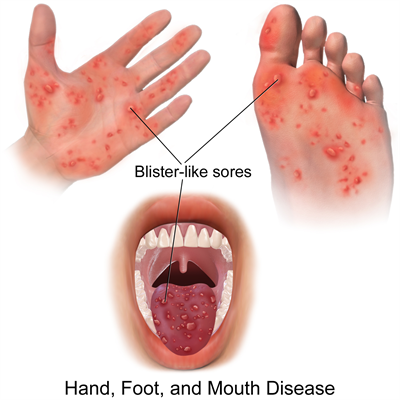
Symptoms:
- Fever
- Decreased milk production
- Weight loss
- Loss of appetite
- Lameness
- Blisters in the mouth, teats and on feet.
- Weight loss
Treatment:
- If treatment is administered at an early stage, it can be fully treated.
- Vaccination is available to protect against specific pathogen strains.
3. Avian influenza
Avian influenza is also known as avian flu or bird flu. In 1996, the avian influenza virus A (H5N1) emerged in southern China and Hong Kong. H5N1 type of influenza virus causing a high proportion of deaths in poultry; therefore, it is a highly pathogenic avian influenza virus. H5N1 was first discovered in humans in 1997 by the WHO. First outbreak was in December 2003. Avian influenza is a highly contagious bird disease caused by a number of viruses. Birds that can carry and spread a bird flu virus include poultry (like chickens, turkeys or ducks), wild birds and even pet birds. The virus has infected people during outbreaks in Africa, the Middle East and parts of Europe.
Causative agent: Influenza virus H5N1.
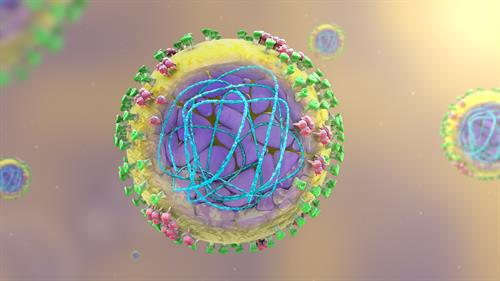
Influenza virus H5N1
Incubation period: The incubation period of the virus is usually 2 - 7 days.
How its spreads: People who have close contact with infected birds or surfaces that the bird’s secretion has contaminated from mouth, eyes, mucus, nasal secretion ordroppings(bird faeces) transmit this disease. In humans the virus enters through the eyes, nose, mouth and touch.
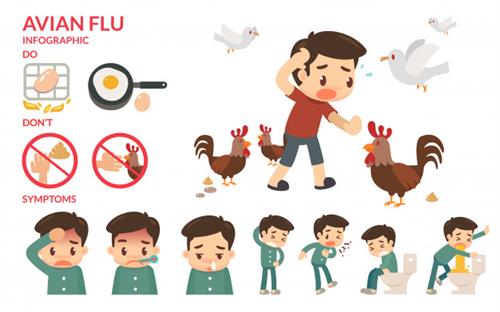
Symptoms:
- Fever
- Cough
- Sore throat
- Running nose
- Muscle and body aches
- Fatigue
- Headache
- Redness of eyes (conjunctivitis)
- Difficulty in breathing
- Loss of appetite
Prevention and Control:
- Avoiding open-air markets.
- Avoiding contact with infected birds.
- Proper cleaning of poultry.
- The eggshell should be cleaned because there is a chance of contamination with bird droppings.
Some diseases caused by microorganisms in human beings:
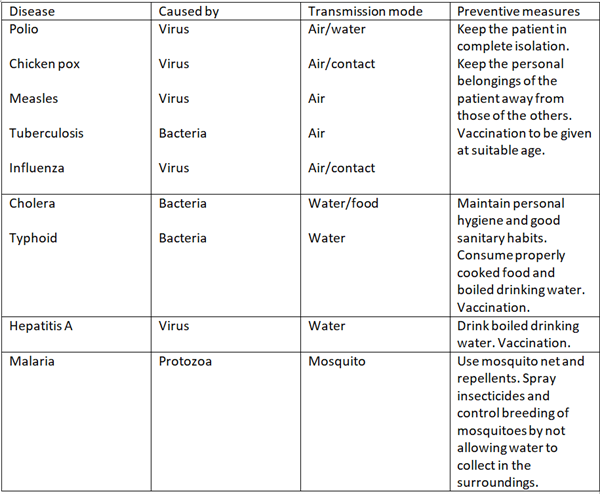
Some ways of avoiding the occurrence and spread of infectious diseases are as follows:
- When sneezing, cover your mouth and nose with a handkerchief.
- Keep your food covered and avoid consuming uncovered food items.
- Drink only safe and clean water.
- Protect yourself from mosquito bites by using mosquito nets and mosquito repellent creams.
- Make sure you get your vaccinations at the right time.
Reference:
https://upload.wikimedia.org/wikipedia/commons/b/b3/Bacillus_Anthracis.png
https://upload.wikimedia.org/wikipedia/commons/c/c3/Hand_Foot_%26_Mouth_Disease.png
https://upload.wikimedia.org/wikipedia/commons/9/91/H1N1_virus.jpg